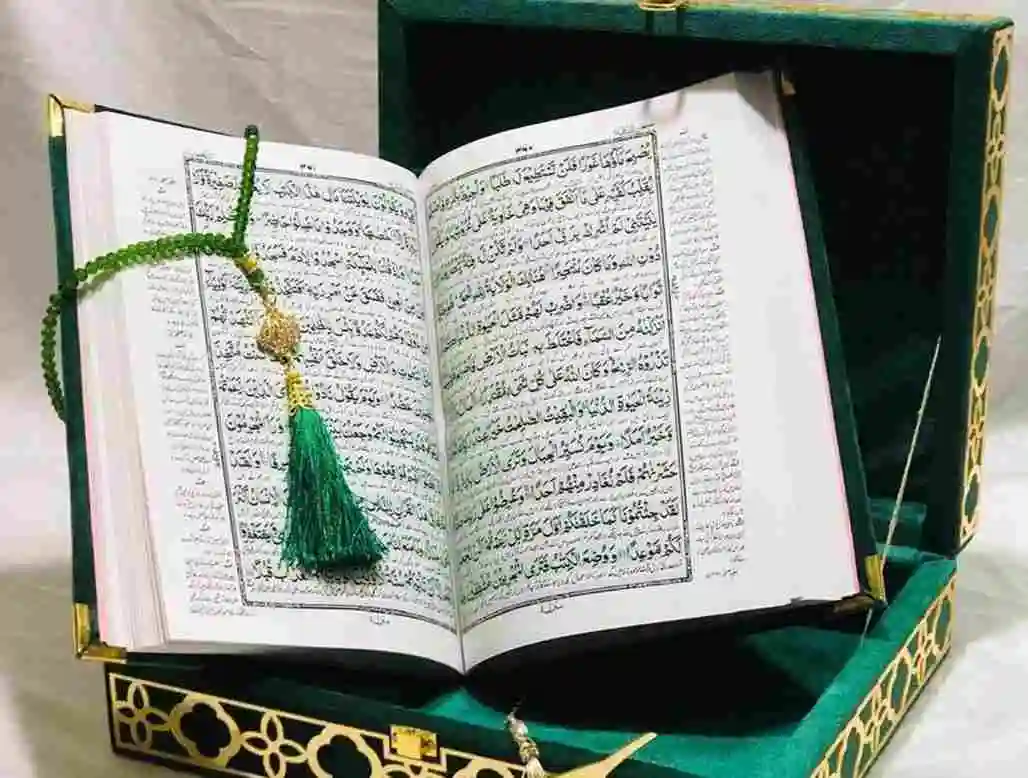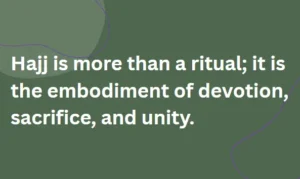The Quran is considered the most sacred text in Islam, believed to be the literal word of God (Allah), revealed to the Prophet Muhammad (PBUH) over 23 years. As the foundation of Islamic teachings, the Quran is not just a religious scripture but a guide to living a righteous life, encompassing laws, ethics, morality, and spirituality. Understanding the Quran’s history involves exploring how it was revealed, compiled, preserved, and its significance to Muslims. Additionally, it is beneficial to compare it with other major holy books from different religious traditions to gain a broader understanding of its place in the world.
1. The Revelation of the Quran
The Quran’s history begins in the early 7th century, around 610 CE, in the Arabian Peninsula. Muhammad, born in Mecca around 570 CE, was raised as an orphan and grew up to become a respected merchant. At the age of 40, while meditating in the cave of Hira near Mecca, he received his first revelation from the angel Jibreel (Gabriel). This event marked the beginning of a series of divine revelations, which continued over two decades.
The Quran was revealed in Arabic and is divided into 114 chapters, called Surahs, which vary in length. The revelations were not given in chronological order but were revealed based on specific events and circumstances in the life of the Prophet Muhammad. These revelations were spoken to Muhammad, who would then recite them to his companions, known as the Sahabah.
2. Compilation of the Quran
After Muhammad (PBUH) died in 632 CE, his followers, known as the Sahabah, recognized the need to preserve the Quran’s teachings in a written form. Initially, the Quran was preserved orally, as many of Muhammad’s companions had memorized the verses. However, with the passing of many of the companions who had memorized the Quran during battles, there was a fear that parts of the revelation might be lost.
The first major step in compiling the Quran came during the caliphate of Abu Bakr, the first caliph of Islam. Under his leadership, the Quranic revelations were collected and compiled into a single manuscript. Zayd ibn Thabit, one of Muhammad’s scribes, was tasked with overseeing this compilation. The manuscript was kept with the first caliph and later passed to the third caliph, Uthman ibn Affan.
Uthman, fearing that differences in recitation and dialects might lead to division within the growing Islamic empire, ordered the creation of multiple copies of the Quran, which were distributed throughout the empire. These copies were based on the compilation made under Abu Bakr. Uthman’s initiative ensured the preservation of a standardized text, which has remained unchanged to this day.
3. Preservation and Authorship of the Quran
Muslims believe that the Quran has been perfectly preserved since the time of its revelation. The Quran is often referred to as the “uncreated word of God” in Islamic theology, implying that it is eternal and unalterable. The belief is that God Himself took responsibility for preserving the Quran, as mentioned in the Quran itself in Surah Al-Hijr (15:9): “Indeed, it is We who sent down the Qur’an, and indeed, We will be its guardian.”
In addition, the preservation of the Quran during the Prophet’s life was primarily oral. Many of Muhammad’s companions, including prominent figures like Zayd ibn Thabit, Abu Bakr, Umar ibn al-Khattab, and Uthman ibn Affan, were dedicated to memorizing the verses of the Quran. These companions were called Hafiz, which means “those who have memorized the Quran in full.” Their ability to recall the exact words of the Quran with precision ensured that the message of God remained intact.
Apart from that, several companions of the Prophet wrote down the Quranic revelations during Muhammad’s life. These written records were kept on various materials like parchment, bones, and leather. However, they were scattered and not compiled into a single manuscript during Muhammad’s lifetime.
The Quran is also distinct in that its language, style, and structure have remained consistent, despite the passage of time. The preservation of the Quran’s integrity and its recitation (Tajweed) are central to Islamic practice, with Muslims encouraged to memorize and recite the Quran in its original language, Arabic, across generations.
4. The Standardization Under Caliph Uthman
As the Muslim empire expanded, different regions began to use slightly different methods of recitation and dialects to pronounce the Quran. This led to variations in the recitation of certain verses. In order to maintain unity and prevent divisions in the Muslim community, the third caliph, Uthman ibn Affan, initiated a major project to standardize the Quranic text.
In approximately 650 CE, Uthman ordered the creation of several copies of the Quran based on the compiled manuscript that had been preserved by Hafsa. Zayd ibn Thabit, along with a group of skilled companions, was once again tasked with overseeing the transcription of the standardized text. The copies were then sent to key cities in the Islamic empire, including Mecca, Medina, Kufa, Basra, and Damascus. The process ensured that the Quran would be uniformly recited across the empire.
Uthman also ordered that any non-standard copies of the Quran should be destroyed, ensuring that the standardized text would be the only version used in the Muslim world. This decision played a crucial role in preserving the Quran’s text as it is today, preventing the emergence of differing versions of the text.
5. The Quran in the Umayyad and Abbasid Periods
After the standardization of the Quran under Uthman, the text remained unchanged throughout history, despite the significant expansion of the Islamic empire. The early caliphates of the Umayyads (661–750 CE) and Abbasids (750–1258 CE) further solidified the Quran’s central role in Islamic society.
During the Umayyad period, the Quran became more widely spread across the vast territories of the empire, from Spain to Central Asia. The Umayyad caliphs, particularly those who ruled in the Eastern provinces, made efforts to promote the Quranic recitation and to build mosques that included Quranic inscriptions. The Quran was not only a religious text but also a symbol of Muslim identity and political legitimacy.
Under the Abbasid caliphs, the Quran continued to be central to Islamic intellectual life. The Abbasid period was marked by the establishment of libraries, centers of learning, and the translation of Greek philosophical texts into Arabic. Quranic scholarship also flourished during this time, with scholars delving into the science of Quranic exegesis (Tafsir), recitation (Tajweed), and the memorization and transmission of the Quran.
6. The Structure and Themes of the Quran
The Quran’s structure consists of 114 chapters, or Surahs, which are further divided into verses, called Ayahs. The chapters are not arranged in chronological order but rather according to their length, with the longest chapters typically found at the beginning and the shortest at the end. The Quran covers a wide range of topics, including theology, law, ethics, guidance for personal conduct, social justice, and the afterlife.
One of the distinguishing features of the Quran is its frequent use of metaphors, parables, and stories of previous prophets to illustrate moral lessons. The Quran emphasizes the oneness of God (Tawhid), the need for justice, compassion, and the importance of living in harmony with God’s commandments. The Quran also emphasizes the importance of faith, prayer, fasting, charity, and pilgrimage, which are known as the Five Pillars of Islam.
7. The Quran’s Influence on Islamic Society
The Quran has had a profound impact on the development of Islamic civilization, shaping the legal, political, and cultural norms of Muslim societies. The teachings of the Quran laid the foundation for Islamic law (Sharia), which governs various aspects of life, including marriage, inheritance, crime, and contracts. The Quran also inspired the creation of countless works of Islamic art, literature, and philosophy.
Additionally, the Quran has influenced Muslim practices such as daily prayer (Salah), fasting during the month of Ramadan, and giving charity (Zakat). The Quran has also guided the ethical and moral values of Muslims, influencing how they interact with others and live their daily lives.
Comparison with Other Holy Religious Books
The Quran shares similarities and differences with the holy texts of other major world religions. Let’s take a look at the key religious scriptures from Judaism, Christianity, Hinduism, and Buddhism to better understand the Quran’s unique place.
The Torah (Judaism)
The Torah, which comprises the first five books of the Hebrew Bible, is considered the foundational text of Judaism. The Torah is believed to have been revealed to the Prophet Moses by God. It contains laws, historical narratives, and ethical teachings. Like the Quran, the Torah is seen as a divine revelation, but it is written in Hebrew and primarily focuses on the covenant between God and the Jewish people.
Both the Quran and the Torah stress the importance of monotheism and moral conduct, though their content and legal systems differ. For instance, the Quran contains a broader range of laws and social guidelines compared to the Torah.
The Bible (Christianity)
The Bible is the sacred scripture of Christianity and consists of two main sections: the Old Testament and the New Testament. The Old Testament corresponds largely to the Hebrew Bible, while the New Testament focuses on the life and teachings of Jesus Christ. Christians believe that the Bible is divinely inspired, and its primary message is the salvation of humanity through Jesus Christ.
While both the Quran and the Bible are considered revelations from God, there are significant differences in their theological approaches. For example, the Quran rejects the divinity of Jesus and emphasizes the oneness of God, while Christianity teaches the doctrine of the Trinity and the divinity of Jesus.
The Psalms (Zabur)
The Quran and the Zabur (Psalms) are both revered scriptures in Islam, but they differ significantly in their nature and content. The Quran is considered the literal word of God, revealed in Arabic to the Prophet Muhammad over 23 years, containing guidance for all aspects of life, law, and spirituality. It is seen as the final and complete revelation. In contrast, the Zabur is believed to be a scripture revealed to Prophet Dawood (David), consisting primarily of hymns and praises to God, with a focus on worship and devotion. While the Quran is comprehensive, offering detailed laws and guidance, the Zubur is more poetic and spiritual in nature, emphasizing the worship of God. Both texts hold a special place in Islamic tradition, but the Quran is regarded as the ultimate and most complete divine revelation, whereas the Zabur is seen as one of the earlier scriptures.
The Bhagavad Gita (Hinduism)
The Bhagavad Gita is one of the most important texts in Hinduism, part of the Indian epic Mahabharata. It is a dialogue between Prince Arjuna and the god Krishna, who provides guidance on duty (Dharma), devotion, and the nature of existence. Unlike the Quran, which emphasizes monotheism, Hinduism embraces a diverse understanding of the divine, recognizing multiple gods and paths to spiritual fulfillment.
While both the Bhagavad Gita and the Quran discuss moral and ethical behavior, they are rooted in different philosophical traditions. The Quran’s teachings are more focused on the unity of God and the afterlife, while the Bhagavad Gita delves into concepts such as karma, reincarnation, and liberation (Moksha).
The Tripitaka (Buddhism)
The Tripitaka, or Pali Canon, is the primary scripture of Theravada Buddhism. It consists of teachings attributed to the Buddha, and it focuses on the path to enlightenment (Nirvana) through moral conduct, meditation, and wisdom. Unlike the Quran, which is a direct revelation from God, the Tripitaka records the teachings of a human being (the Buddha), who is believed to have attained enlightenment.
The Quran and the Tripitaka have different spiritual goals—one is focused on submission to the will of God (in Islam), while the other focuses on personal liberation from suffering (in Buddhism). However, both emphasize the importance of ethical behavior and the pursuit of inner peace.
Read the Quran To Learn More About Islam
From the time of the Prophet Muhammad, through the careful preservation efforts of the early caliphs, to the modern era where it remains a source of spiritual guidance and intellectual study, the Quran has shaped and defined Islamic civilization. Its unaltered text, deeply embedded in the cultural and spiritual practices of over a billion Muslims, remains one of the most influential books in human history.
The Quran’s message continues to resonate across the centuries, offering spiritual guidance, moral clarity, and a roadmap for righteous living. Its preservation, integrity, and centrality in the lives of Muslims testify to its revered status as the unchanging word of God. Understanding sacred texts of the Quran fosters faith and a deeper appreciation for the rich spiritual traditions that shape humanity’s worldview.






